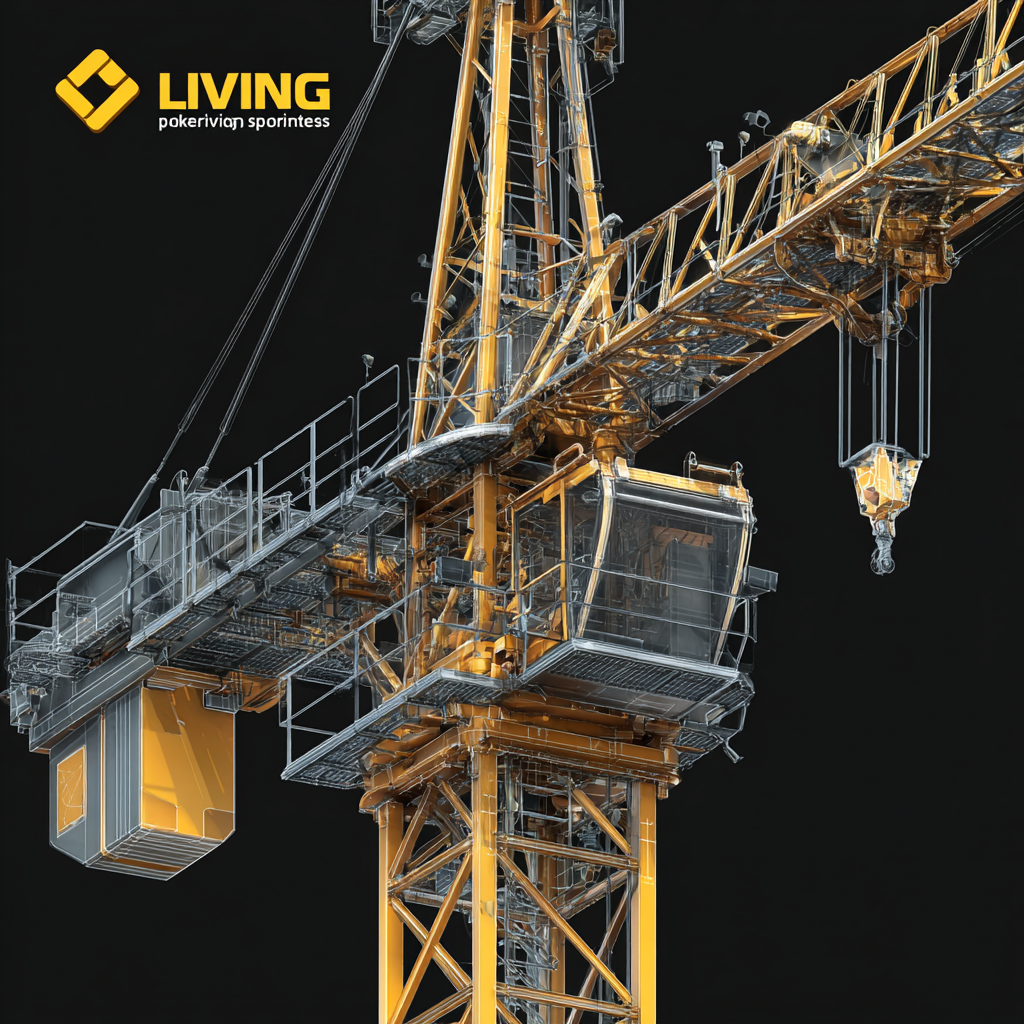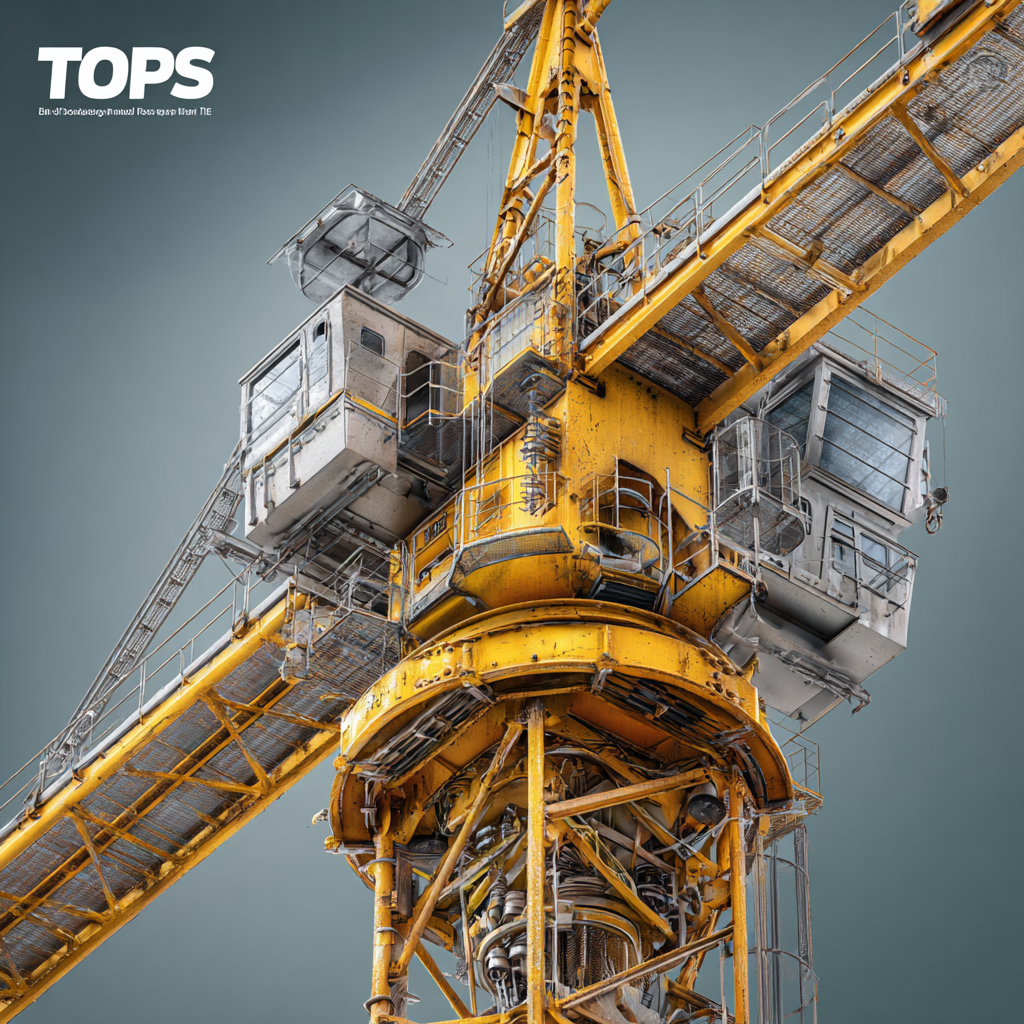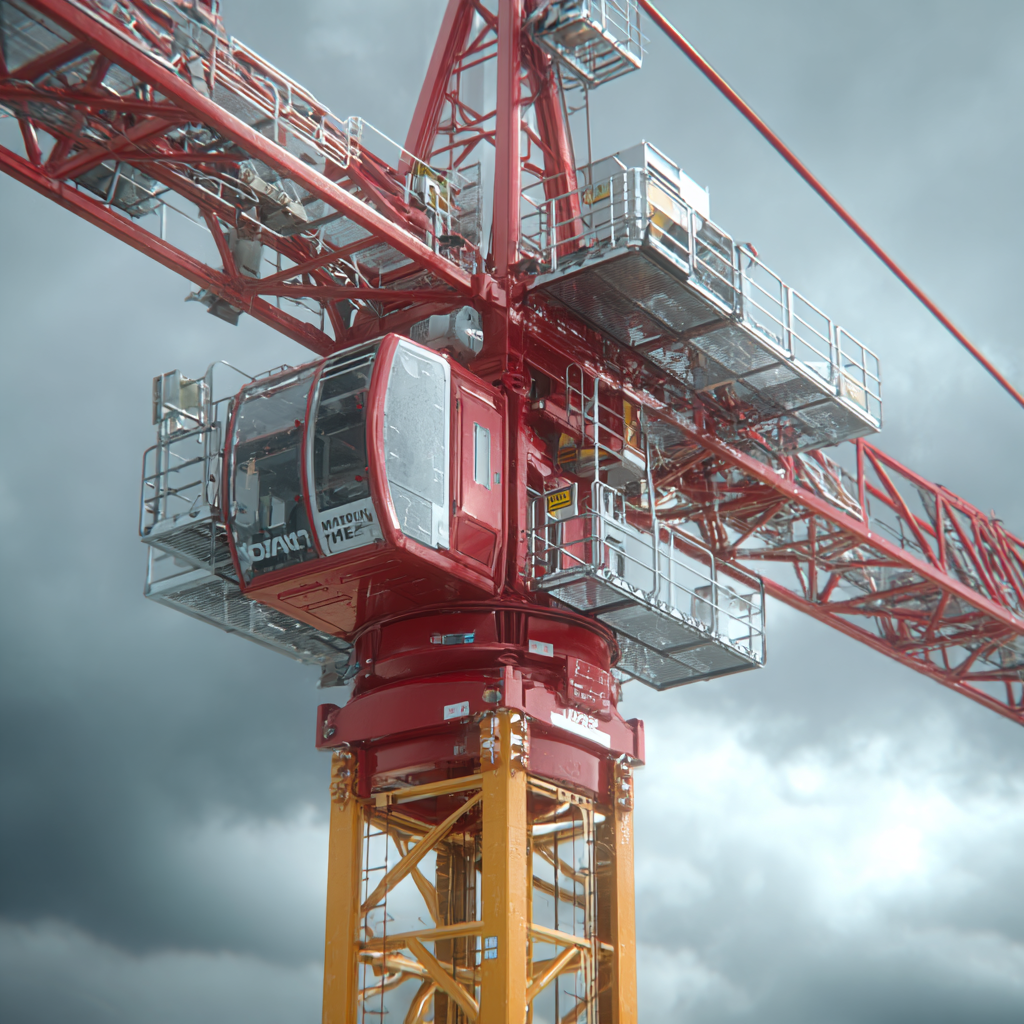As the construction industry continues to evolve, embracing innovation becomes imperative for efficiency and safety. Tower cranes, pivotal in large-scale projects, are experiencing a transformation driven by advancements in technology and engineering. This blog explores the future of top features in tower cranes, with a keen focus on the essential parts of tower crane that contribute to their functionality and performance. By prioritizing quality and leveraging China’s manufacturing prowess, the global tower crane market is poised for remarkable growth. With innovative designs and smart technologies being integrated into their essential components, the next generation of tower cranes promises to enhance operational efficiency, reduce downtime, and ensure safer working environments. Join us as we delve into how these advancements will define the future of tower cranes and their parts, reshaping the skyline of urban development worldwide.

 The evolution of tower crane technology is pivotal in shaping modern construction practices. As urbanization accelerates, the crane market is projected to reach USD 51.7 billion by 2032, with a compound annual growth rate (CAGR) of 4.6%. This growth is primarily driven by the demand for efficient lifting solutions in construction, ports, and renewable energy sectors. The transition towards smart city initiatives has also spurred innovation in crane operations, integrating advanced digital technologies for enhanced performance and safety.
The evolution of tower crane technology is pivotal in shaping modern construction practices. As urbanization accelerates, the crane market is projected to reach USD 51.7 billion by 2032, with a compound annual growth rate (CAGR) of 4.6%. This growth is primarily driven by the demand for efficient lifting solutions in construction, ports, and renewable energy sectors. The transition towards smart city initiatives has also spurred innovation in crane operations, integrating advanced digital technologies for enhanced performance and safety.
Moreover, the integration of automation into crane systems is transforming how construction projects are executed. Researchers are identifying key technologies that facilitate crane-lift automation, resulting in increased productivity and reduced labor costs. As creative solutions are sought to combat climate change, the construction industry is also witnessing a shift towards environmentally-friendly practices. This adaptation reflects a broader trend of leveraging technology not only for efficiency but also for sustainable development, ensuring that the future of tower cranes is not just about lifting but also about uplifting the standards of construction overall.
The evolution of tower cranes is marked by significant advancements that enhance both efficiency and safety on construction sites. Key innovations, such as the integration of smart technology, have revolutionized how these machines operate. For instance, the implementation of IoT sensors enables real-time data collection and monitoring, allowing operators to make informed decisions swiftly. This technology helps in predicting maintenance needs, which reduces downtime and boosts overall productivity.
To maximize benefits from these innovations, it’s crucial for construction managers to invest in training for their operators. Equip your team with the latest knowledge on advanced features, such as automated load monitoring systems. Additionally, consider utilizing predictive analytics tools to foresee potential risks and maintenance requirements.
Another vital aspect of embracing innovation in tower cranes is prioritizing safety. Features like anti-collision systems and enhanced visibility through 360-degree cameras ensure that workers and equipment remain protected on-site. Implement regular safety drills to familiarize your crew with these tools and reinforce the importance of adhering to safety protocols. By making safety a fundamental part of your operational culture, you can create a more secure work environment while driving efficiency forward.
This chart represents the impact of various innovative features on efficiency and safety in tower cranes, highlighting their importance in modern construction.
The integration of smart technology, particularly the Internet of Things (IoT), is revolutionizing the operations of tower cranes. Traditionally, crane operations were reliant on human operators present on-site, but advancements in digitalization and connectivity have shifted this paradigm. IoT-enabled tower cranes can now communicate real-time data, enhancing efficiency and safety. These cranes are equipped with sensors that monitor various parameters, such as load weight, weather conditions, and operational status, allowing for predictive maintenance and reducing downtime.
**Tip:** Implementing an IoT platform can streamline crane operations. Ensure that all components are compatible with the chosen IoT solutions, facilitating seamless integration and data sharing.
As the crane market is projected to grow significantly, with the potential to reach USD 70.4 billion by 2035, the role of IoT will become increasingly prominent. Automation through IoT not only boosts performance but also minimizes human error, creating safer construction environments.
**Tip:** Regularly update and calibrate your crane's IoT systems to take advantage of the latest advancements, ensuring optimal performance and compliance with industry standards.

The future of tower cranes is poised for a transformative shift, centered around enhancing functionality and sustainability. As construction projects grow in complexity and scale, the demand for cranes that can adapt to diverse operational demands has never been greater. Innovations in design are paving the way for multifunctional cranes that not only boost efficiency but also integrate seamlessly with various project requirements. Features such as modular components and advanced control systems are emerging, allowing operators to modify crane setups quickly and easily, thereby minimizing downtime and maximizing productivity on job sites.
Sustainability is another critical design trend in the evolution of tower cranes. With a growing emphasis on eco-friendly practices in construction, manufacturers are focusing on reducing the carbon footprint of their equipment. This includes the development of lighter materials and energy-efficient electric cranes that consume less power while maintaining high performance levels. Incorporating smart technology such as IoT sensors can further enhance operational efficiency and facilitate real-time monitoring, ensuring that cranes not only perform optimally but also contribute to a more sustainable construction ecosystem. The fusion of functionality and sustainability will define the next generation of tower cranes, ultimately reshaping the future of the construction industry.
| Feature | Description | Benefits | Sustainability Impact |
|---|---|---|---|
| Smart Control Systems | Advanced software optimizing crane operation and safety. | Increased efficiency, reduced risk of accidents. | Lower energy consumption through optimized operation. |
| Modular Design | Cranes designed for easy transport and assembly. | Less transportation cost and time, versatility in projects. | Reduced material waste and lower carbon footprint. |
| Electric-Powered Systems | Cranes powered by electricity instead of diesel. | Quieter operation, lower fuel costs. | Significantly reduced emissions contributing to cleaner air. |
| Enhanced Load Monitoring | Sensors that provide real-time load data. | Improved safety through overload prevention. | Minimized resource waste from overloading incidents. |
| Telematics Integration | Remote monitoring of crane operations and health. | Better maintenance scheduling and operational efficiency. | Extends the lifespan of cranes, contributing to resource conservation. |
As the construction industry evolves, tower cranes are at the forefront of innovation, incorporating features that enhance efficiency and safety.
One significant upcoming development is the integration of advanced AI and IoT technologies. These innovations will enable real-time data collection and analysis, allowing operators to make informed decisions based on live conditions at the worksite. This leap towards smart technology not only improves the operational efficiency of tower cranes but also minimizes human error, ensuring a safer working environment.
Additionally, the introduction of modular designs in tower cranes is set to revolutionize their construction and maintenance. Modular components can be easily transported and assembled, significantly reducing setup time and costs. This feature will be particularly beneficial for projects in urban areas where space is limited and quick deployment is essential. As these technologies continue to advance, we can anticipate a future where tower cranes are not only more efficient but also more adaptable to various construction challenges.
